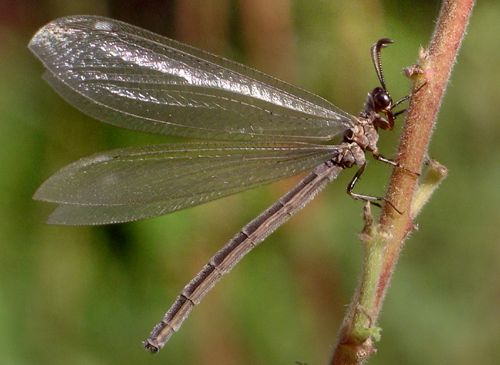by Valerie
June, 2016Antlion
Although the insect shown above looks like a damselfly, it is actually an antlion (Myrmeleon sp.). Unrelated to damselflies and dragonflies, antlions are in the order Neuroptera, along with lacewings, owlflies, mantisflies, and other insects most people have never heard of. In both their larval and adult forms, these predators attack other arthropods. I'm actually not sure if adult antlions in this particular genus actually hunt, as I've never seen any eating. The adult may be unfamiliar, but most people have noticed the little pits that the larvae make in sand or dry soil. Frequently called doodlebugs, the antlion larvae dig themselves into the bases of the pits and wait with open large jaws for unsuspecting prey, such as ants, to fall in. It is possible to dig out the larva if you are quick and use a spoon or other tool. When they sense danger, the larvae dig even deeper and are often quite difficult to unearth. One reason the adults are not seen more frequently is that they spend their time hiding on twigs, with their wings folded down, making them almost invisible. Only if they are disturbed will they fly out. So how do you tell an antlion from the very similar looking damselfly? The antennae are the best clue: those of an antlion are obvious and clubbed, while those on damselflies are so small you will not even notice them. |